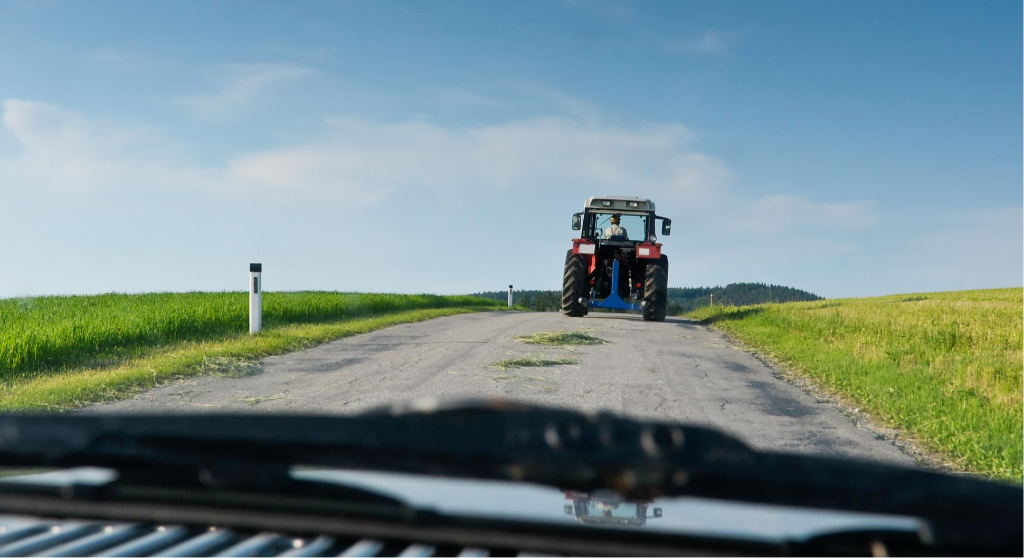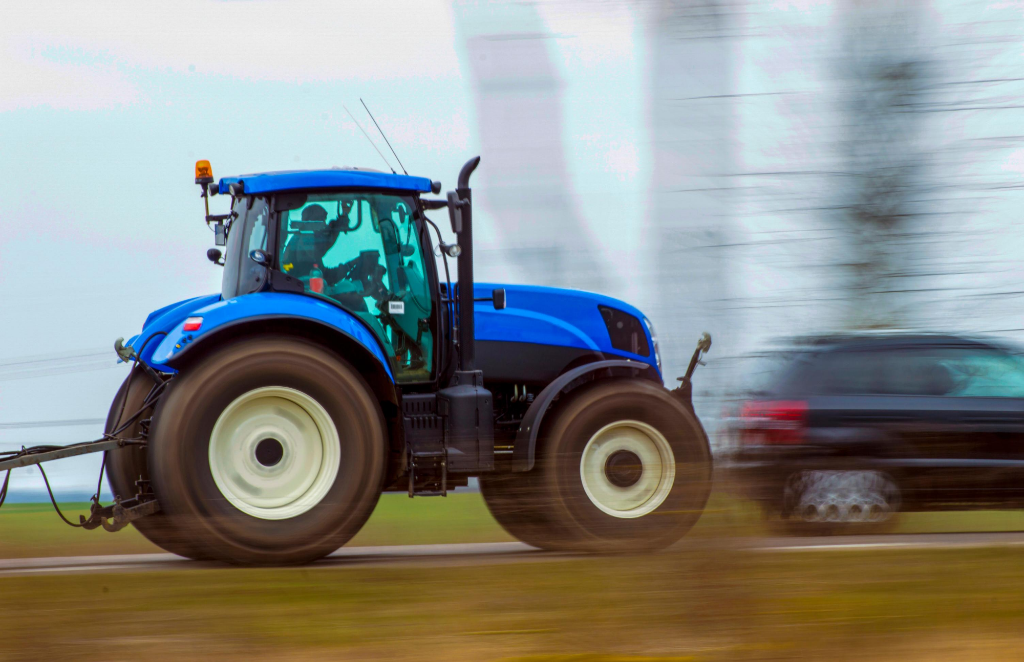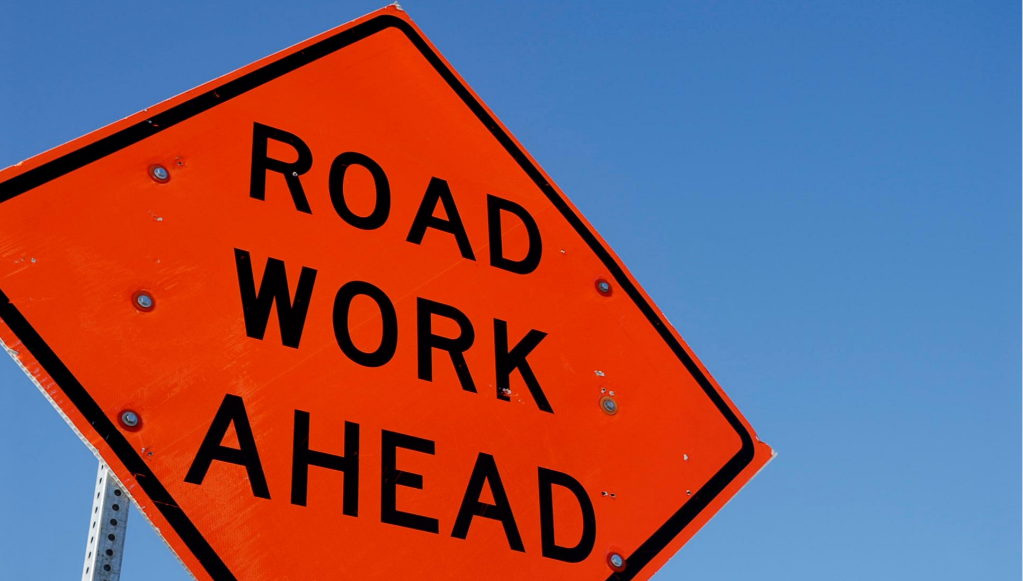Drive safely for a successful harvest
 Drive safely for a successful harvest
Drive safely for a successful harvest
Harvest has begun!
We’re all looking forward to fresh produce, the incredible images shared with us from producers from the cabs of their harvesters, and success across the country for all our farmers and ranchers. However, we also have to be more vigilant and careful on the roads.
Regular motorists and farmers with large ag equipment must share the road with respect for each other. According to the Canadian Agricultural Injury Surveillance program, 13% of farm-related fatalities in Canada are traffic-related, and almost half of all collisions happen between July to September, at the height of harvest.
Summer is also peak construction season, and this year there are orange road signs everywhere. Couple regular road construction with harvest time, and you’ve got a lot of delays and impatient drivers.
You must keep a level head in these situations and not act rashly in an attempt to save a few minutes of time. Remember, it’s better to show up late than not at all, and a split-second decision can cost you your life and possibly the lives of others.
Motorists
It’s vitally important to be alert and patient at all times when you're behind the wheel, but even more so at this time of year when there are more travelers and large equipment on the roads.
The most common accident is a farm machine being hit while turning onto a public road; also, a high number of motorists misjudge the size and speed of a piece of farm equipment while traveling behind it, and rear end it. Stay vigilant for upcoming machinery and never overestimate the maneuverability of the equipment, or you may find yourself in a precarious situation.
Patience is key when driving during harvest. The people in the farm equipment know they’re slow and can cause traffic delays, but such is harvest life. They don’t purposefully want to delay you; they’re trying to do their job.

Be aware of your surroundings and watch for lanes or fields the machinery may be turning off on to. If you need to move around the machinery, do not pass until you’re 100% sure the way is clear and use all indicators to ensure the operator knows you’re moving around them. In these circumstances, you must also be wary of the impatience of anyone behind you, as well. You’re already going slower than usual; be aware of the traffic directly ahead of you, in the opposite lane, and behind you.
Take road hazards into account, as well. Secondary highways and side roads are narrower, with less room to pass big equipment. Road conditions also vary, and there’s often a lot of dust kicked up that can impede visibility, or obscure important road signs.
Equipment Operators
As the operator of a large piece of farm equipment, you should know and abide by the rules of the road to ensure you get home safely every day. According to the Alberta Farm Safety Program, there are three ways to best do that:
- Make sure your equipment is safe to operate and visible with lighting and Slow Moving Vehicle (SMV) signage that’s clearly visible (not faded or obscured)
- Follow safe driving tips by avoiding busy roads even if the other way is longer, only allowing trained and licensed drivers behind the wheel, slowing when making turns to prevent rollovers, and traveling at a speed you know you can control
- Drive defensively

Be aware of your equipment’s blind spots, and make sure your windows and mirrors are clean and won’t obstruct your view. If you’re driving with your hazard lights on, make sure to turn them off before signaling your intent to make a turn.
If you have no choice but to travel on a busy road, or during heavy traffic, familiarize yourself with the traffic patterns. If an impatient driver is following too closely, which could lead to a close call (or worse), pull over as best you can to allow them to pass. As frustrating as it is to have someone on your tail and give into them, it’s safer for you and the other motorists around you.
As harvest extends into the fall and days become shorter, proper lighting is imperative. According to the Use of Highway and Rules of the Road Regulation, night or “darkness” is defined as “the period commencing one hour after sunset and ending one hour before the following sunrise, or when atmospheric conditions (such as snow, rain, fog, smoke) do not allow enough light to clearly see a person at a distance of 150 metres”.
Construction Zones

We all deal with it: summer road construction. Keeping our roads maintained is essential, no matter how frustrating the experience can be. Road crews work long hours through just about every version of Alberta weather there is; the last thing any of them want is to be injured or killed because of a careless motorist.
According to AMA in 2018, 900 collisions happen every year in Alberta in road or utility construction areas, some resulting in injuries or fatalities. As the motorist passing by, there’s no way to know where members of the road crew could be positioned, where they’re working, if they’re hidden behind equipment or materials, etc. The faster you’re driving, the longer it takes to stop if needed.
In 2019, the Alberta Government changed regulations that when workers aren’t present in a construction zone, the reduced speed signs must be covered and the regular speed limit can be observed. But even if there appears to be no activity at the site, be aware that there could be fresh oil, loose gravel chips, and uneven surfaces that could damage your vehicle or cause a dangerous situation if you lose control.
Patience is the key
Driving is a privilege that can be taken away without respect for the rules of the road, your fellow motorists, and anyone working to ensure you have food on your table and roads to travel on.
Harvest and road construction are inevitable, so drive with attention, caution, and patience. You’ll get home safely, and so will the workers, ranchers, producers, and other employees who share the roads with you.